
Recycle bins at the Summer Palace


Day 3 (Saturday) - Beijing and nearby
|
|
 
Day 3 (Saturday) - Beijing and nearby
|
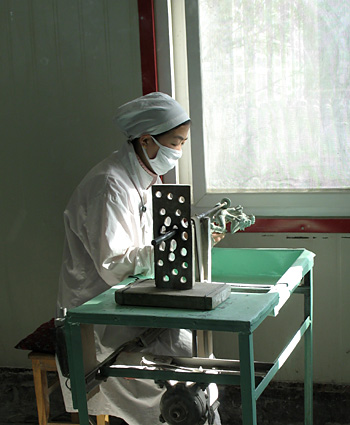
Jade factory worker shaping a piece of jade |
Saturday morning we headed out bright and early towards the Ming Tombs, about 31 miles from Beijing. On the way we stopped at the Jade Store/Factory – not on the itinerary but very interesting and, of course, most everyone bought something. We were given a quick course in jade, what to look for, what consitutes quality, what colors are most prized, etc. Then we went in the store. I ended up with jade earrings. Others bought bracelets, rings, and other items.
|
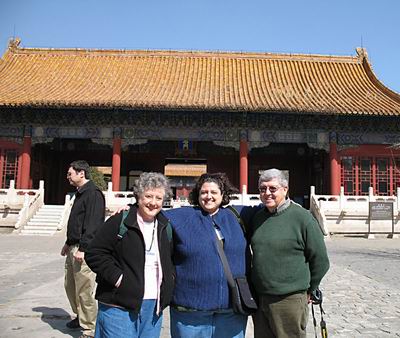
|
Anne, Lucie, and Gene in front of one of the buildings (a museum) at the Ming Tombs north of Beijing
|
|
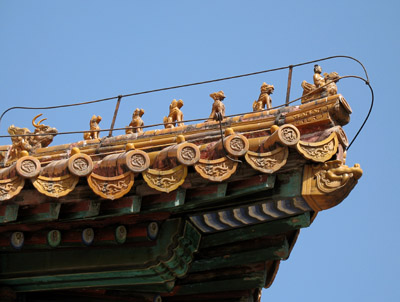
|
Close-up of edge of roof at the Ming Tombs site showing the detailed carvings.
|
 View of part of the ceiling in the museum
|
 Crown worn by one of the emperors
Crown worn by one of the emperors
| |
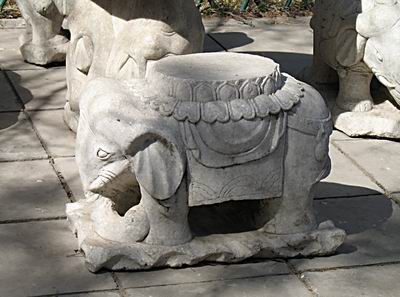 Carved elephant at the Ming Tombs
|
 Throne of one of the Ming emperors
|

Cloisonné workers painting and glazing |
| |
|
|
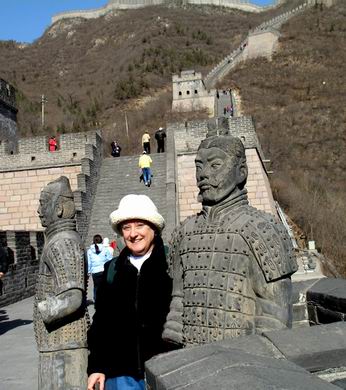
Anne next to one of the terracotta soldiers | |

Some of our group going up and down the wall |
It also has (according to the guidebooks) a museum and restaurants (which I never saw) and a cable ride up to the top of one side (which I also did not see). The side we went up had guard towers every so often and the views were very good as we got higher and higher.
| |
|
|
|
|
|
|
| 8 April 2006 | [China Trip Index|next] |